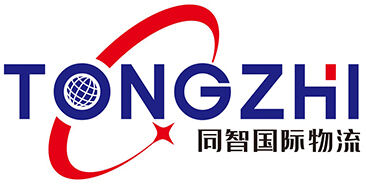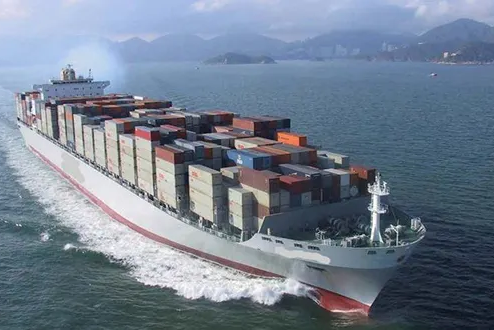O transporte de contêineres é a base do comércio global, permitindo o movimento eficiente e seguro de mercadorias em todo o mundo. Com a demanda crescente por comércio internacional, as empresas devem entender as nuances do transporte de contêineres para otimizar suas operações logísticas. Este artigo explora as melhores práticas e considerações-chave para maximizar a eficiência no transporte de contêineres.
Entendendo o Transporte de Contêineres
O transporte de contêineres envolve a movimentação de mercadorias em grandes contêineres padronizados. Esses contêineres vêm em vários tamanhos, sendo os mais comuns os contêineres de 20 pés e 40 pés. A padronização permite uma transferência suave entre navios, caminhões e trens, tornando-o um modo versátil e eficiente de transporte.
Principais Benefícios do Transporte de Contêineres
Eficiência: Os contêineres são projetados para manuseio e empilhamento fáceis, o que acelera o processo de carga e descarga nos portos. Essa eficiência se traduz em tempos de trânsito mais rápidos e custos reduzidos.
Segurança: As mercadorias transportadas em contêineres são menos suscetíveis a danos e furtos. A construção robusta dos contêineres oferece excelente proteção contra os elementos e possíveis atos de pilhagem.
Custo-Efetividade: O transporte de contêineres geralmente é mais econômico do que outros modos de transporte, especialmente para envios internacionais de longa distância. A capacidade de consolidar múltiplos envios em um único contêiner reduz ainda mais os custos.
Versatilidade: Os contêineres podem transportar uma ampla variedade de mercadorias, desde matérias-primas e máquinas até itens perecíveis e produtos acabados. Contêineres especializados, como unidades refrigeradas (reefers), atendem a necessidades específicas, como controle de temperatura.
Melhores Práticas para o Transporte em Contêineres
Escolha o Tipo de Contêiner Certo
Selecionar o tipo de contêiner adequado é crucial para garantir o transporte seguro e eficiente de mercadorias. Contêineres secos padrão são adequados para a maioria dos tipos de carga, mas as empresas devem considerar contêineres especializados para necessidades específicas:
Contêineres Refrigerados (Reefers): Para mercadorias perecíveis que exigem controle de temperatura.
Contêineres de Teto Aberto: Para cargas sobredimensionadas que não cabem em um contêiner padrão.
Contêineres de Plataforma Baixa: Para itens pesados e volumosos, como máquinas e veículos.
Otimize a utilização do contêiner
Maximizar o uso do espaço disponível dentro de um contêiner pode reduzir significativamente os custos de envio. As empresas devem:
Embale e Empilhe Produtos Corretamente: Certifique-se de que os produtos estão embalados firmemente e de forma segura para evitar deslocamentos durante o transporte.
Use Pallets e Esteiras: Facilitam o manuseio fácil e o uso eficiente do espaço.
Distribuição Equilibrada de Peso: Distribua o peso uniformemente para manter a estabilidade e evitar danos.
Implemente Sistemas de Rastreamento Avançados
O rastreamento e monitoramento em tempo real das remessas fornecem insights valiosos e aumentam a visibilidade durante todo o processo de envio. Sistemas de rastreamento avançados oferecem:
Atualizações de Localização em Tempo Real: Mantenha as empresas informadas sobre o local e o status de suas remessas.
Monitoramento de Condições: Garanta que produtos sensíveis à temperatura permaneçam dentro da faixa requerida.
Análise Preditiva: Antecipe possíveis atrasos e otimize rotas para entregas mais rápidas.
Garanta Conformidade com Regulamentações
A conformidade com regulamentações internacionais de envio é essencial para evitar atrasos e penalidades. As empresas devem:
Mantenha-se Informado Sobre as Regulações de Comércio: Mantenha-se atualizado com as leis de importação/exportação e os requisitos aduaneiros para cada destino.
Prepare Documentação Acurada: Certifique-se de que todos os documentos necessários, como conhecimentos de embarque, certificados de origem e declarações aduaneiras, estejam corretamente preenchidos e enviados no prazo.
Trabalhe com Despachantes Aduaneiros Experientes: Facilite a liberação aduaneira suave e minimize o risco de problemas de conformidade.
Aproveite a Tecnologia para Maior Eficiência
A tecnologia desempenha um papel crucial na otimização das operações de transporte de contêineres. As empresas devem adotar:
Software de Gestão de Transporte Marítimo: Simplifique os processos de reserva, documentação e rastreamento.
Sistemas Automatizados de Manipulação de Cargas: Acelere as operações de carga e descarga nos portos.
Tecnologia Blockchain: Aumente a transparência e a segurança na cadeia de suprimentos fornecendo um registro imutável de transações e movimentações.
Principais Considerações para o Transporte de Contêineres
Gestão de custos
Os custos de envio podem impactar significativamente o resultado final de um negócio. Estratégias-chave para gerenciar custos incluem:
Consolidação de Envios: Combine múltiplos envios em um único contêiner para aproveitar economias de escala.
Negociação de Contratos: Garanta tarifas e condições favoráveis com linhas de transporte marítimo e despachantes aduaneiros.
Otimização de Rotas: Selecione as rotas mais eficientes e econômicas para minimizar tempos de trânsito e reduzir o consumo de combustível.
Gestão de Riscos
Gerenciar riscos associados ao transporte em contêineres é essencial para garantir a entrega segura e pontual das mercadorias. Considere o seguinte:
Cobertura de Seguro: Proteja-se contra possíveis
perdas devido a danos, roubo ou atrasos.
Planejamento de Contingência: Desenvolva planos para lidar com interrupções inesperadas, como greves nos portos ou desastres naturais.
Auditorias Regulares: Realize auditorias dos processos de transporte e dos parceiros para identificar e mitigar riscos.
Práticas de Sustentabilidade
A sustentabilidade está se tornando cada vez mais importante na logística global. As empresas podem adotar práticas ecologicamente corretas, como:
Utilizando Navios Eficientes em Termos de Combustível: Opte por linhas de transporte marítimo que utilizem navios modernos e eficientes em termos de combustível para reduzir as emissões de carbono.
Implementando Soluções de Embalagem Verdes: Use materiais de embalagem recicláveis e biodegradáveis para minimizar o impacto ambiental.
Compensando Emissões de Carbono: Participe de programas de compensação de carbono para neutralizar a pegada ambiental das atividades de transporte marítimo.
Conclusão
O transporte de contêineres é um componente vital do comércio internacional, oferecendo eficiência, segurança e custo-benefício. Implementando boas práticas, como selecionar o tipo certo de contêiner, otimizar o uso do contêiner, aproveitar sistemas avançados de rastreamento, garantir conformidade regulamentar e abraçar a tecnologia, as empresas podem maximizar os benefícios do transporte de contêineres. Além disso, gerenciar custos, mitigar riscos e adotar práticas sustentáveis são cruciais para manter uma vantagem competitiva no mercado global.







































